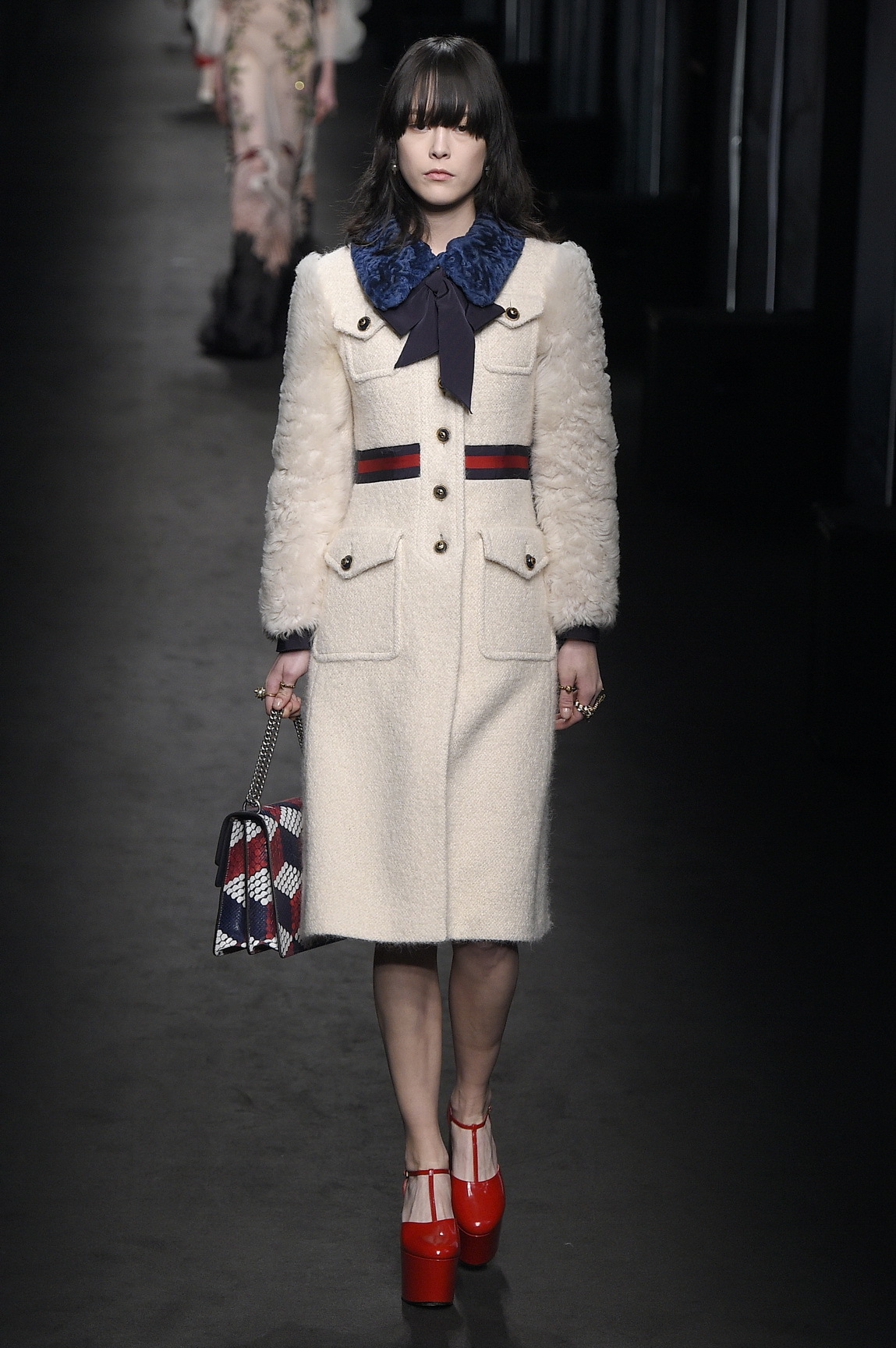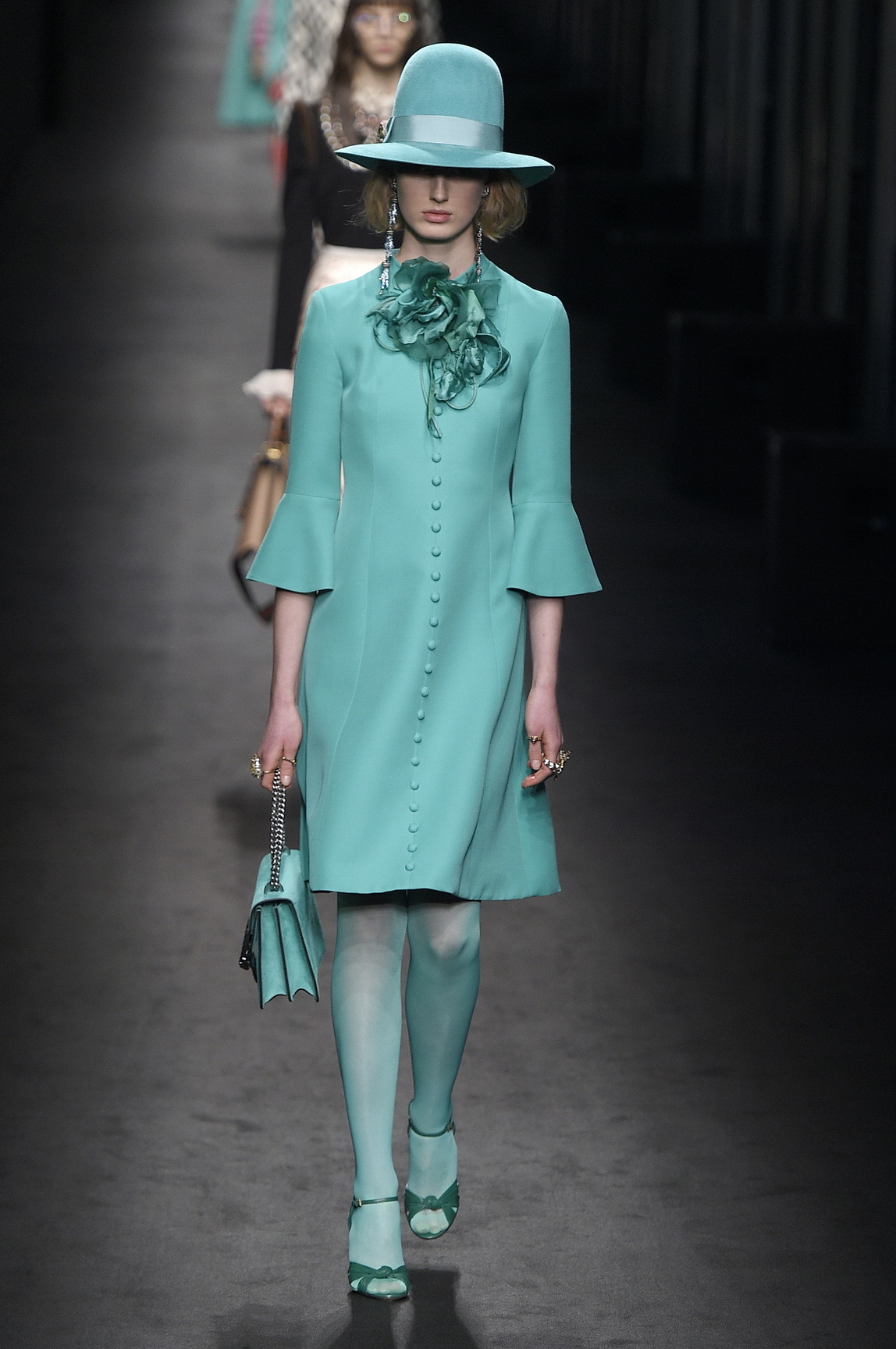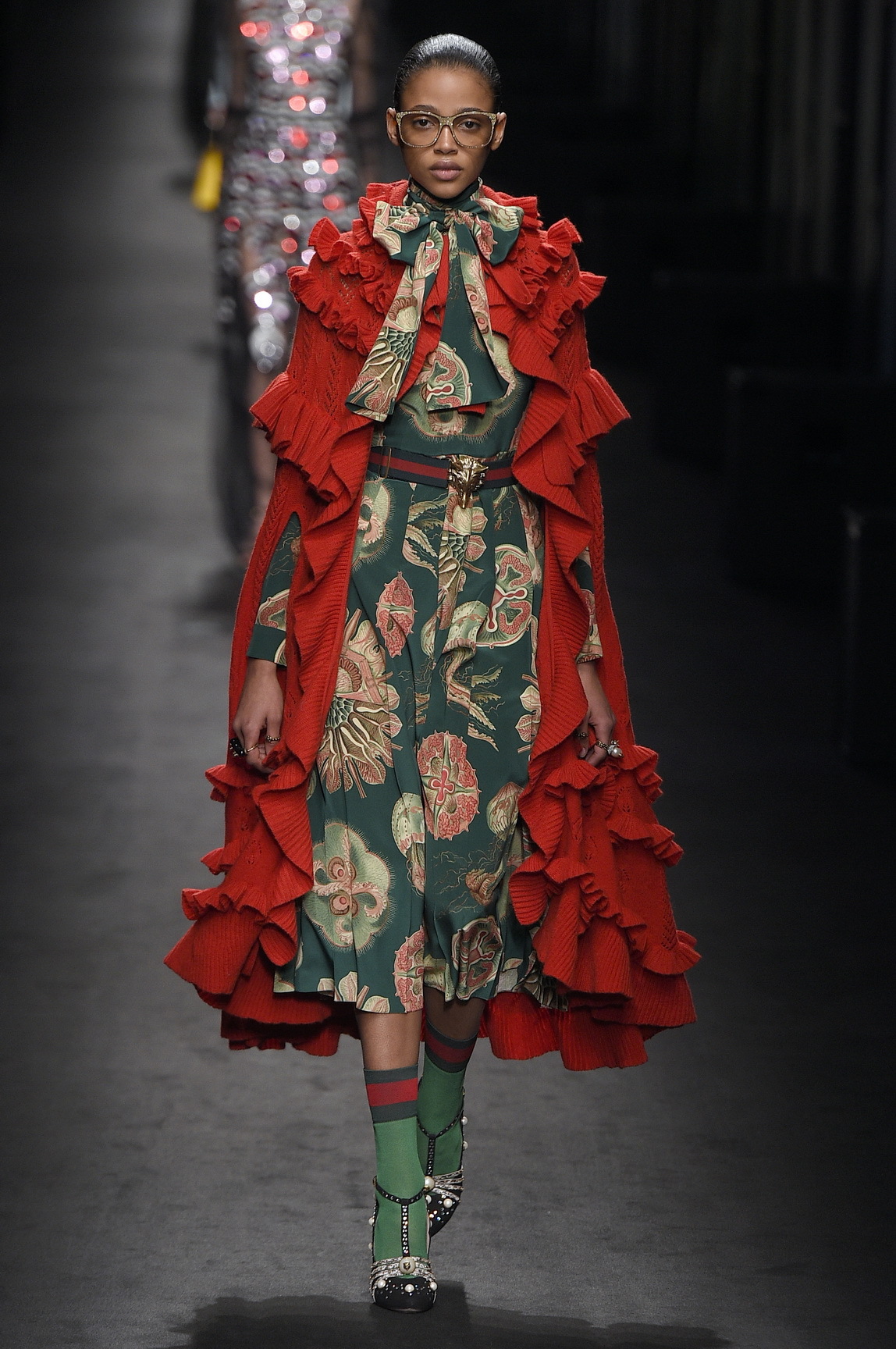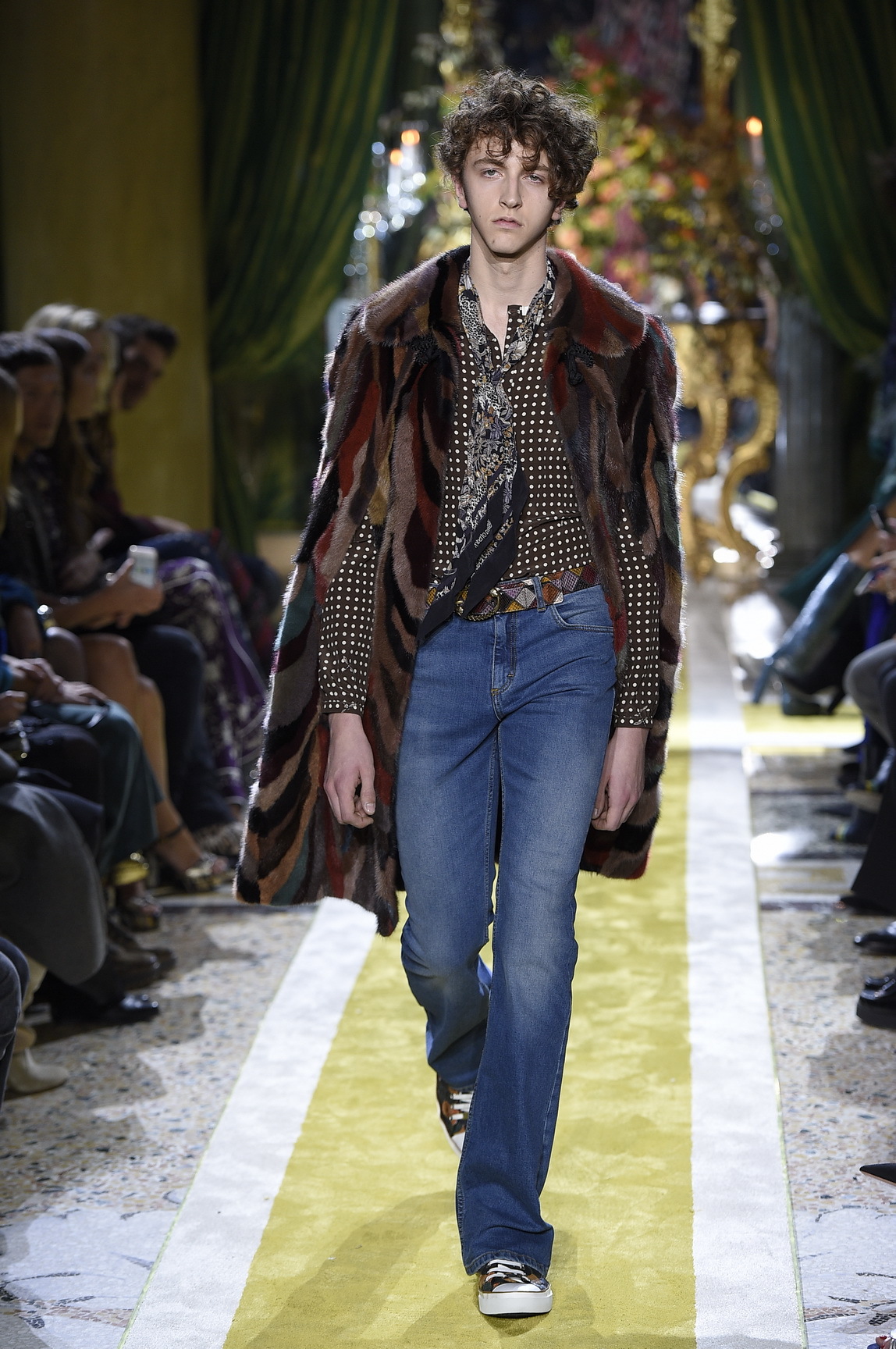The point of Alessandro Michele’s hi-tech set at Gucci this season — with electro-natural graphics rolling over screens to a throbbing soundtrack that all signified a departure from the normally so ceremonious and church-like drama of his shows – was to demonstrate the adaptability of his distinctive visual identity. It’s only been a year since Michele reinvented Gucci and revolutionized the fashion world, but in this business impatience is an epidemic that can easily spoil a slow but important creative process. If there are people out there, who expect Michele to reinvent and revolutionize fashion once a year, his fall/winter 16 collection was his way of showing them that it’s not his form language that needs radical seasonal change—it’s its surroundings, and the people who wear it.

The Renaissance is an inexhaustible source of inspiration for Michele, who lives and breathes the prolific creativity of the time, and he’s not going to swap it for a different historical era simply for the sake of a new reference. The very nature of his work at Gucci is to re-imagine the same visual identity in a new universe, and developing it from there. Michele, for instance, loves East London (even if his Instagram would suggest he spends more time in Renaissance palazzi) and as his spring/summer 16 campaign — a tribute to Christiane F. — illustrated so perfectly, the character of his work changes completely when introduced to a contemporary setting.

If you understand this thought process, you understand the brilliance of Michele’s reference this season: ‘Renaissance street style’, a tongue-in-cheek combination of old world and new world, and a way for Michele of expressing said adaptability. “When you look at something beautiful, it’s not the same for everybody,” he said backstage, meaning that we all find different attractions in the same objects. When he presents his shows, it’s merely our glimpse into the way Michele sees his work: his set, his soundtrack, his styling. But you have to make it your own, just like he has made famous elements from the Gucci archives his own.

This season it was the tiger motif, which he accompanied with other animals such as the black panther. “It’s my way of talking about the symbols of the brand: something to make everything powerful. That kind of science makes you recognize that we’re in the Gucci house. The family was quite obsessed with tigers in the beginning, so I think there’s a bigger relation between the brand and animals. And me,” he said. “I love animals. It’s an addiction of power and beauty. They’re beautiful, you’re scared, you can’t resist. I love the ambiguity.” It could have been a statement on his Gucci woman – and man – captured so perfectly in the all-pink bubblegum majesty of look two: a fur coat with tights, preened to extravagance like some rare tropical bird.

There was something totally electric about Michele’s take on his own universe this season, highlighted in that juxtaposition of old and new. It was hyper, mixing garments from the sportswear wardrobe with prom-y ball gowns, and — of course — filtered through his 70s machine of louche glamour. But weirdly most alluringly, a very formal men’s look found its way into the collection circa mid-show, showing a much different side to Michele, which might hint at future explorations. It was a 19th century opera tuxedo, all black and white with a black ribbon tied around the neck. Michele does Victoriana? It would be a dream come true.

At Roberto Cavalli, Peter Dundas was fresh off his first-ever men’s show in January, which had influenced his approach to womenswear. “I don’t know menswear so I was really doing things I like to wear, and the women’s drew naturally on that,” he said backstage. For his second women’s show for the house, it was as if he wasn’t just channelling his rock gods — Jimmy Page, Keith Richards, Mick Jagger, Jimi Hendrix, Robert Plant, Serge Gainsbourg, Gram Parsons — but their WAGs: those hyper-glamorous wives and girlfriends, without whom the glam rock dream would be incomplete. Behind every great man is an even greater woman, and if anything, the work of Peter Dundas — and certainly Roberto Cavalli, the founder of the aesthetic he is now interpreting — proves that.

If his debut collection in September hadn’t entirely established the balance between Dundas glamour and Cavalli glamour, his sophomore effort nailed it. And it wasn’t his inspiration material — the early twentieth century Art Nouveau of Gustav Klimt and Aubrey — that did it. It was the realisation that fashion right now is a conversation between men’s and womenswear — and an amalgamation of the two. Counterbalanced by the raw sex appeal of the men’s rock ‘n’ roll wardrobe, Dundas’ opulent feminine glamour was so much cooler. For both him and Alessandro Michele, the success of their future work lies in the importance of time. Nothing good ever came from rushing.

Credits
Text Anders Christian Madsen
Photography Mitchell Sams
